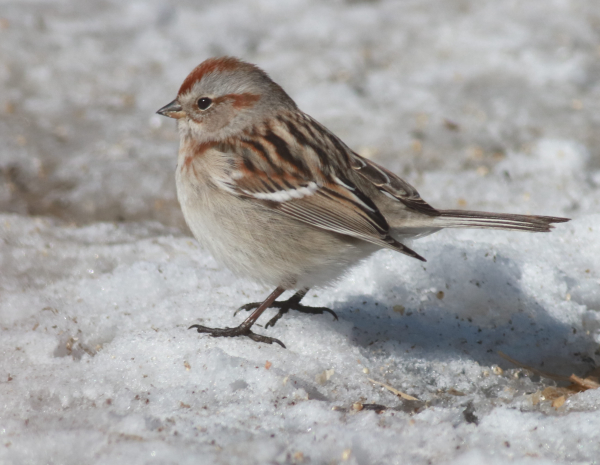 American Tree Sparrows, colored with bright rufous markings, were the most common birds at the nature center feeding stations
|
 American Tree Sparrows, colored with bright rufous markings, were the most common birds at the nature center feeding stations
|